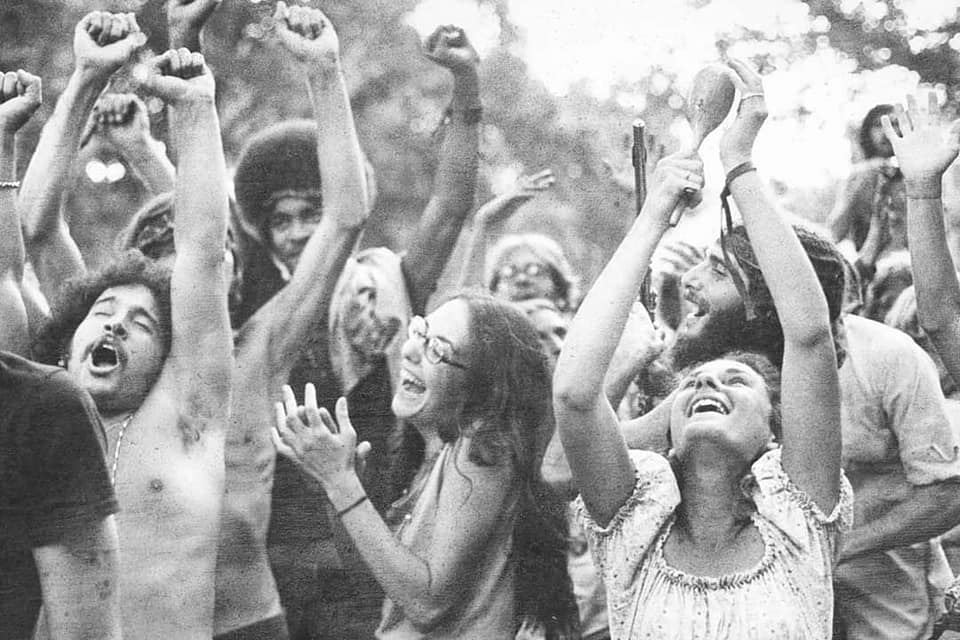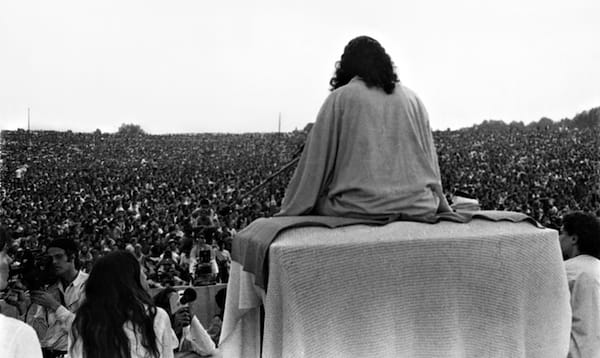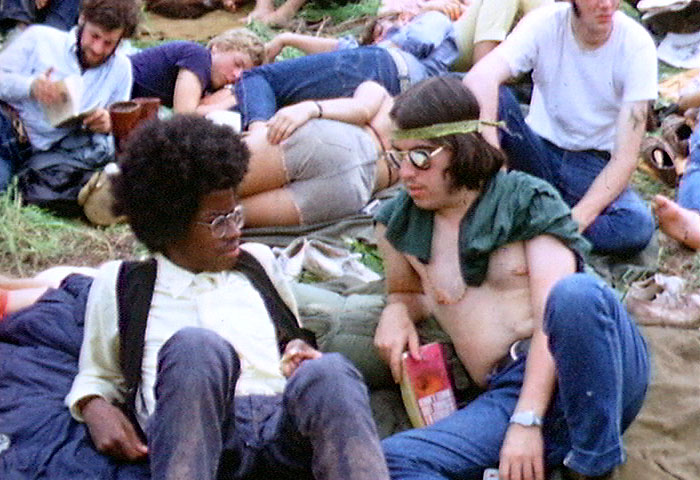Woodstock Music and Art Fair: What Was Missing From Woodstock?

In August 1969, when I was a teenager, too young for a driver’s license, I attended the Woodstock Music and Art Fair in Bethel, New York, along with 500,000 other people.
Life was simpler in 1969. This festival succeeded because certain things we expect to have today were not available.
By the Time We Got to Woodstock
My buddy Henry and I arrived by bus from Manhattan on Thursday, and slept in a small hotel on Broadway, in Monticello. We started Friday with a hearty breakfast at a Monticello diner near the hotel.
After breakfast, a pickup truck hauling a hay cart, stopped at a traffic light outside this diner. One of us asked, “Are you going to Woodstock?”
We sat in the bed of the truck, while our intrepid driver created a third lane on Route 17B, by following the center line. As a line of cars followed us, we knew we were starting an unforgettable adventure.
The Greatest Radio Show of All Time
Fast forward to the present day (written in 2019), and my daughter Maxine’s house, where I am reminiscing about the past while taking care of her little dog.
Thanks to the nice folks at WXPN FM, Public Radio from the University of Pennsylvania, I was able to relive the magic of Woodstock with their special broadcast called XPNStock: the Woodstock Music and Art Fair — in real time, exactly 50 years later.
A World Without Cell Phones

As I listened to Chip Monck’s personal announcements on the radio, it struck me that Maxine has never known a world without cell phones.
The gravity of Chip Monck’s messages, like, “John Smith. Your brother is in a hospital,” shocked her, because we are accustomed to instant communications.
Back in Woodstock, there were no cell phones. This led to some real challenges and surprises.
The absence of cell phones allowed us to cherish every moment and be part of something truly extraordinary.
What We Didn’t We Have at Woodstock?
Woodstock was an oasis of peace. Because many problems that affect our 21st century life were missing.

- Liquor
- I didn’t see any liquor or people who were excessively drunk. Some people brought Boone’s Farm and Mateus wine. Beer supplies were limited.
- Hard Drugs
- Hard drugs were virtually non-existent at Woodstock. There was lots of marijuana and LSD. But I did not see pills, snorting, injecting. Crack and fentanyl had not been invented.
- Weapons
- The festival grounds were a peaceful place. The only things I saw were pocket knives and corkscrews. There was nothing more dangerous than that. One maniac with an AR-15 could have ruined everything.
- Fights
- I saw one bare-knuckle fight, after an inappropriate comment to someone’s girlfriend. Bystanders ended this fight in seconds.
- Marauders
- The Proud Boys, MS-13, and Antifa did not attend. Instead, joyous motorcycle gangs wearing decorated denim jackets, joined the crowd.
- Cell Phones / Laptops
- In 1969, cell phones and laptops were not available. It’s hard to imagine the chaos and fights if charging stations were available. Additionally, amateur phone photographers would have blocked progress and caused injuries.
- Religion
- The festival began with a short speech and chanting led by the late Swami Satchidananda. Remarkably, no contentious religious groups were demonstrating or recruiting members.
- Politics
- Woodstock was a happy place. Music and positive attitudes unified a half million strangers. 1,2,3, What Are We Fighting For? by Country Joe McDonald summed up the political sentiment of the event.
Woodstock: A Teenager’s Adventure
The Woodstock Music and Art Fair became this amazing symbol of peace, love, and music.
Leaving the festival was a feeling like no other. We all had this hope that everything would be better, because we saw 500,000 strangers coming together and spending a peaceful weekend, even with a rainstorm and not enough food or bathrooms. It was incredible how we all got along and shared that beautiful experience of music and togetherness.
I will always cherish the memories of this extraordinary event that brought so many souls together in a time of simplicity and true human connection.

Nostalgia and the Changing Times: The Temptation of Revisiting Yasgur’s Farm
Memories of the Woodstock Music and Arts Festival hold a special place in my heart. The thought of returning to Max Yasgur’s Farm, is tempting. I considered traveling 1,200 miles from Florida for the annual reunion this year (2023). My family and I attended the reunion in 1990.
The Lure of the Past
However, despite the strong pull of nostalgia, I will not attend the reunion. Why? Because the reality can sometimes fall short of the beautiful memories we hold dear. Woodstock remains a symbol of unity, peace, and carefree celebration.
The idea of revisiting Yasgur’s Farm, and finding it commercialized is not appealing. Sometimes, memories are better than reality.
Woodstock = Timeless Legacy
Woodstock’s legacy is not confined to a specific time or place. It lives on through the hearts of all who experienced its magic, even if only through the stories passed down to new generations. The spirit of Woodstock will forever be an emblem of a time when people came together in harmony, and the power of music united a generation.
Farewell to Yasgur’s Farm
I will say my silent farewells to Yasgur’s Farm during the annual reunion. The memories of the Woodstock Music and Art Fair will continue to live on, reminding us all of the profound impact a music festival can have on the world.